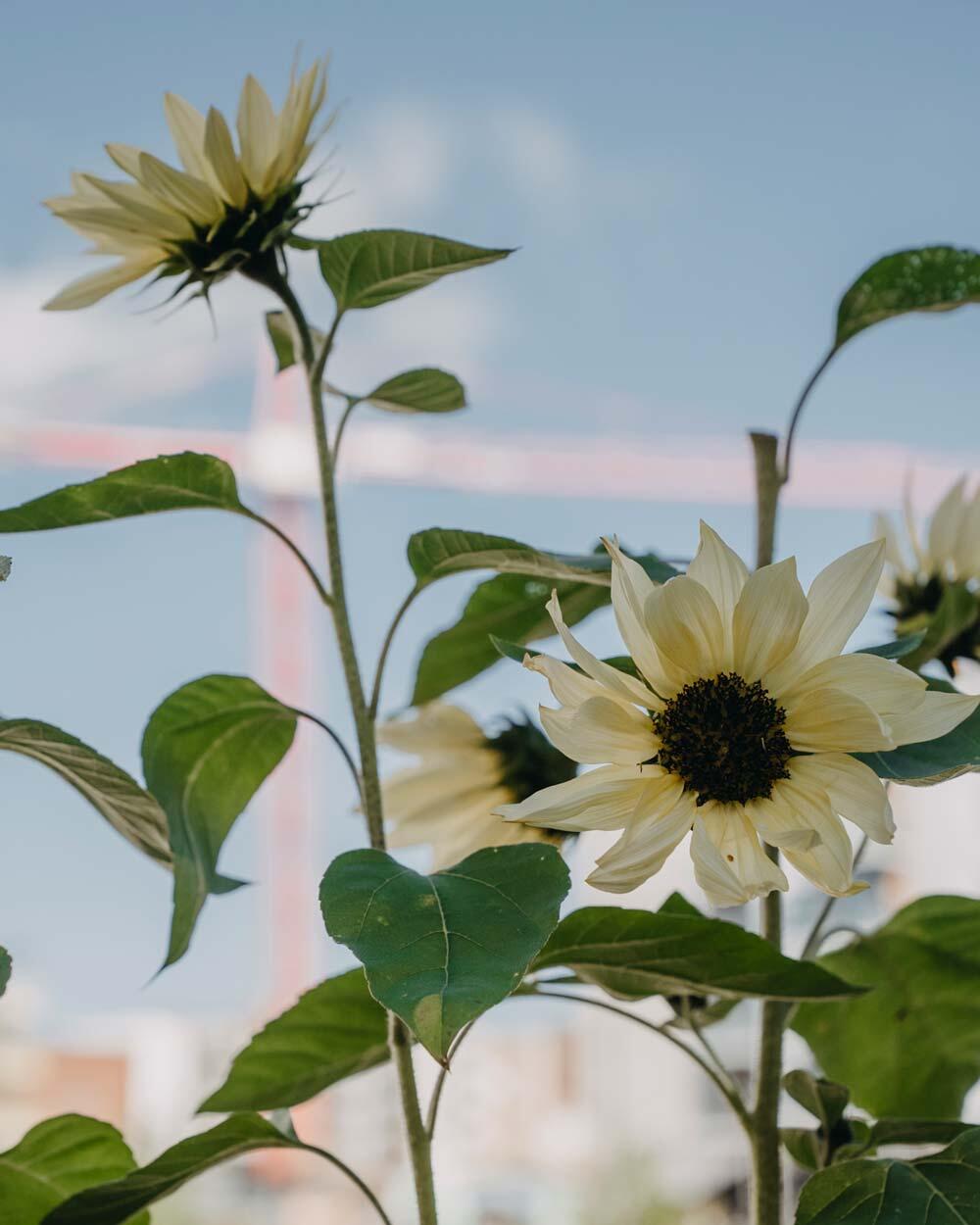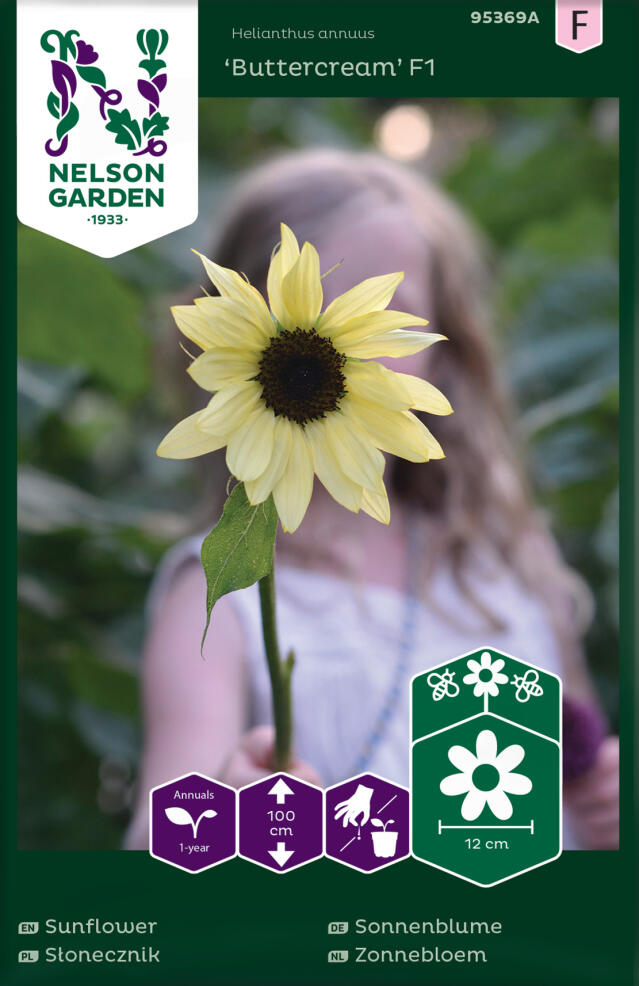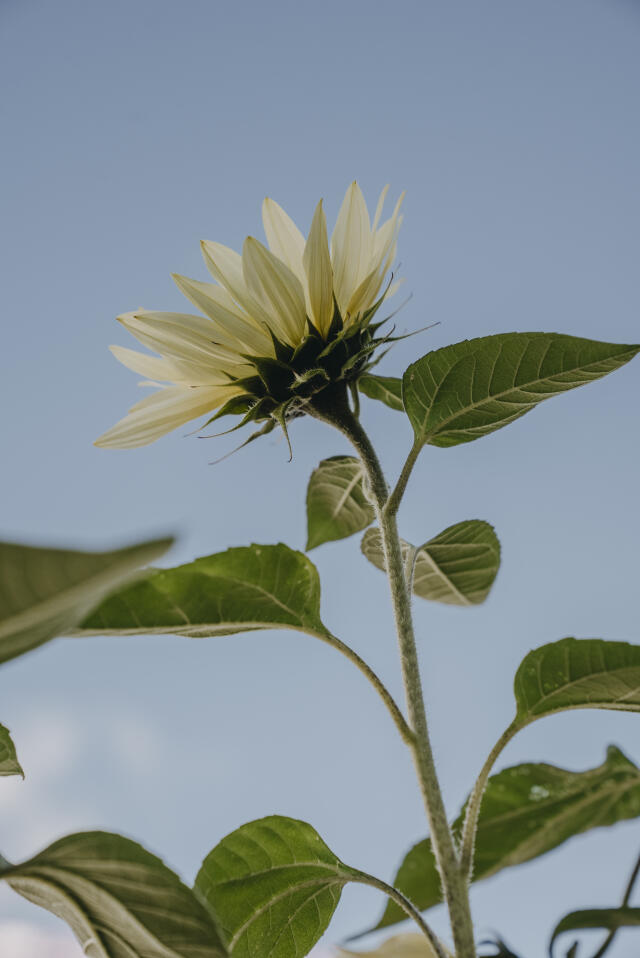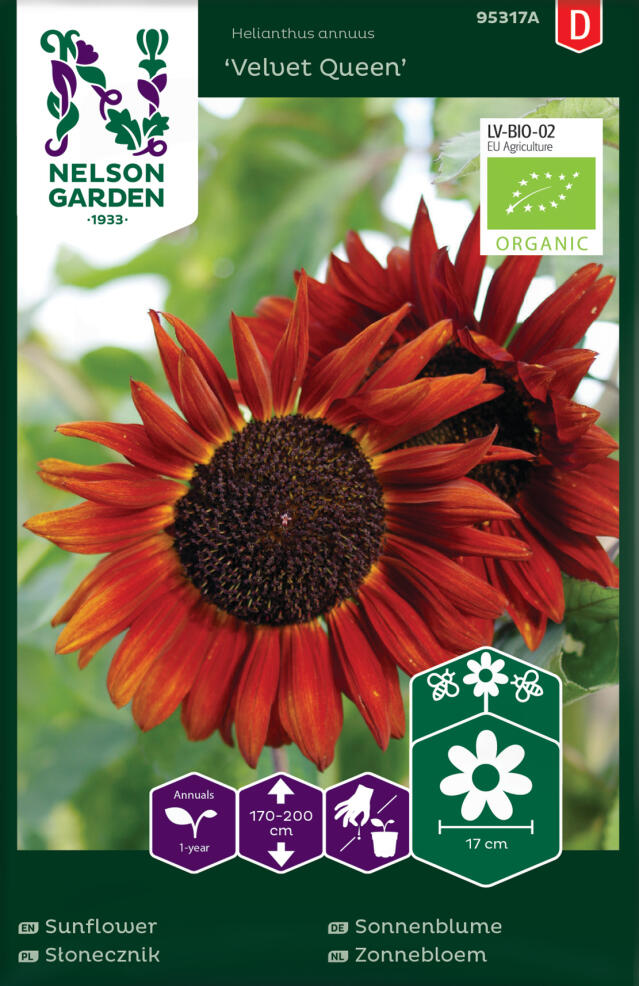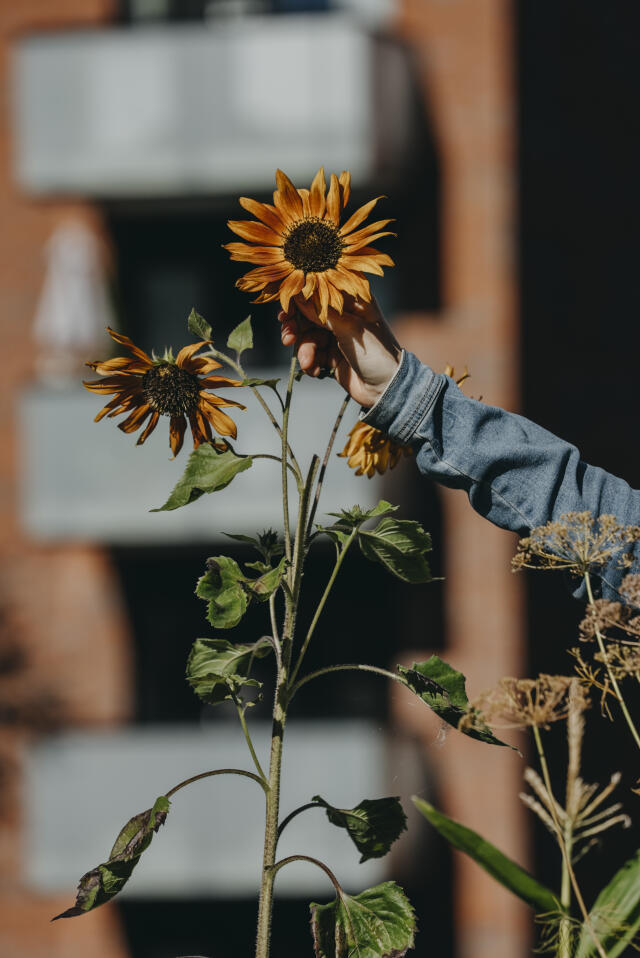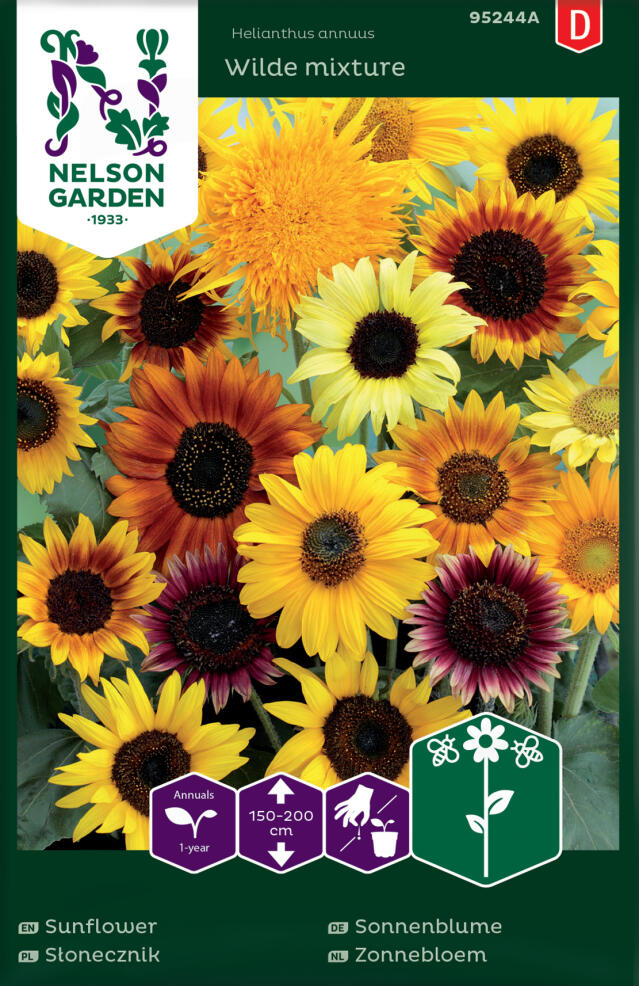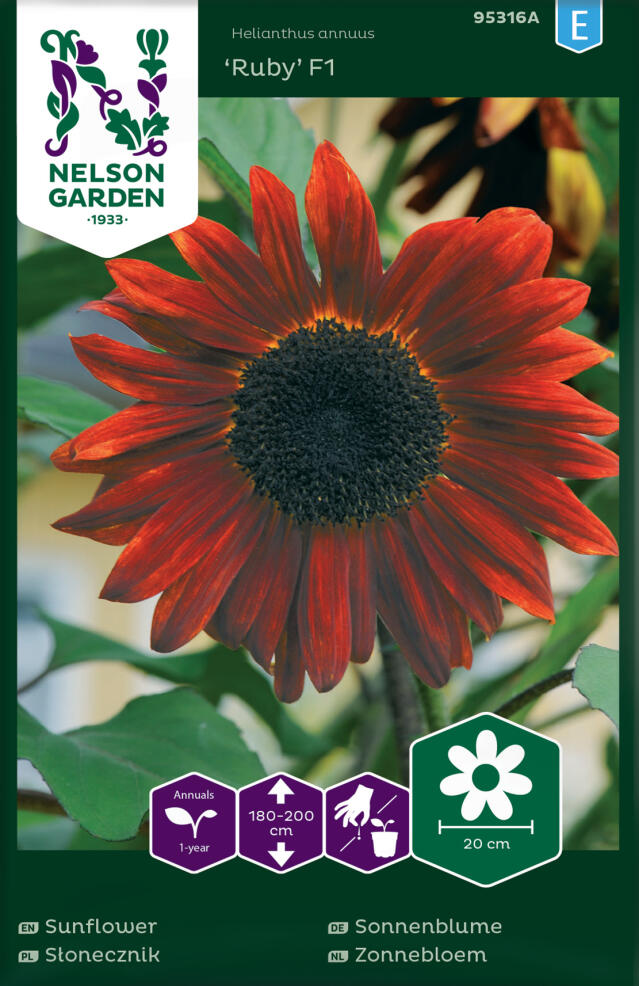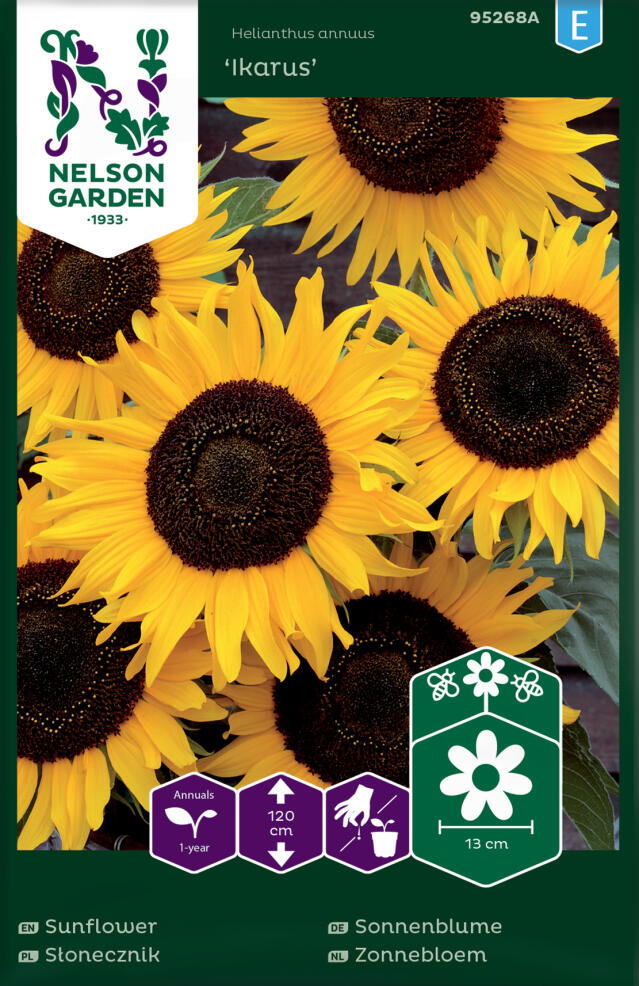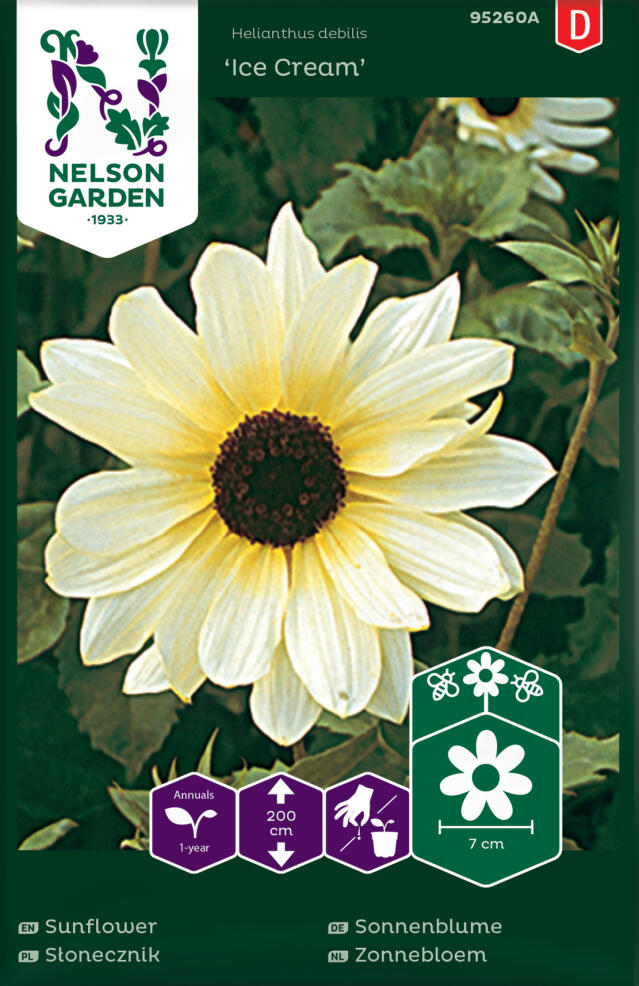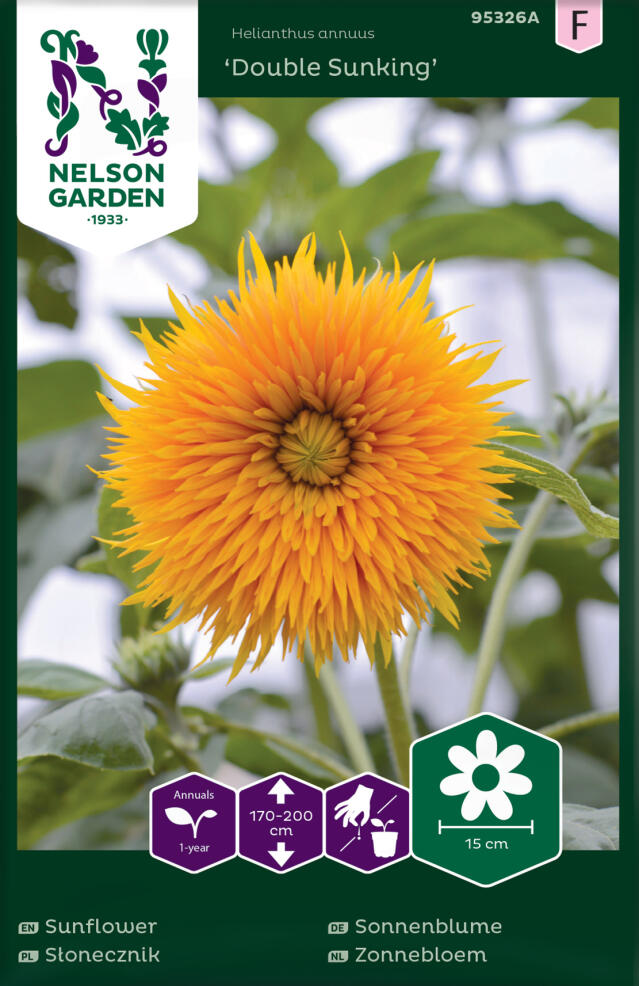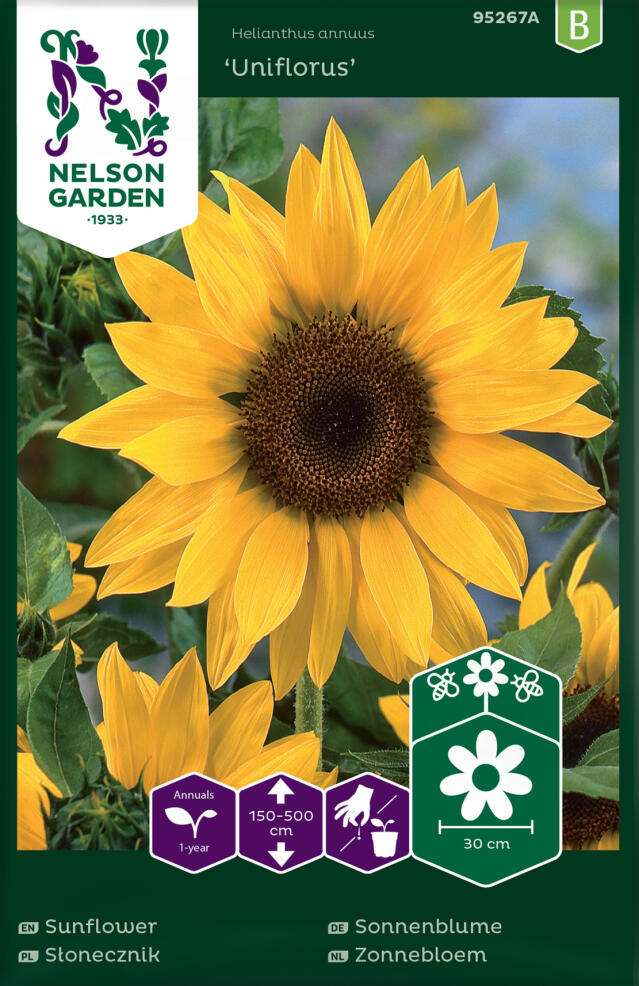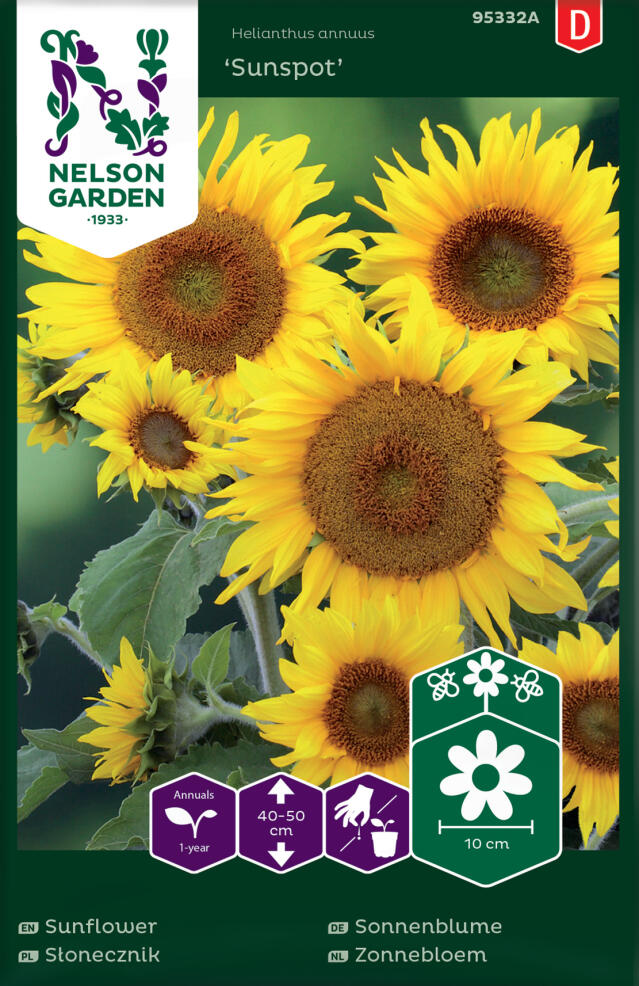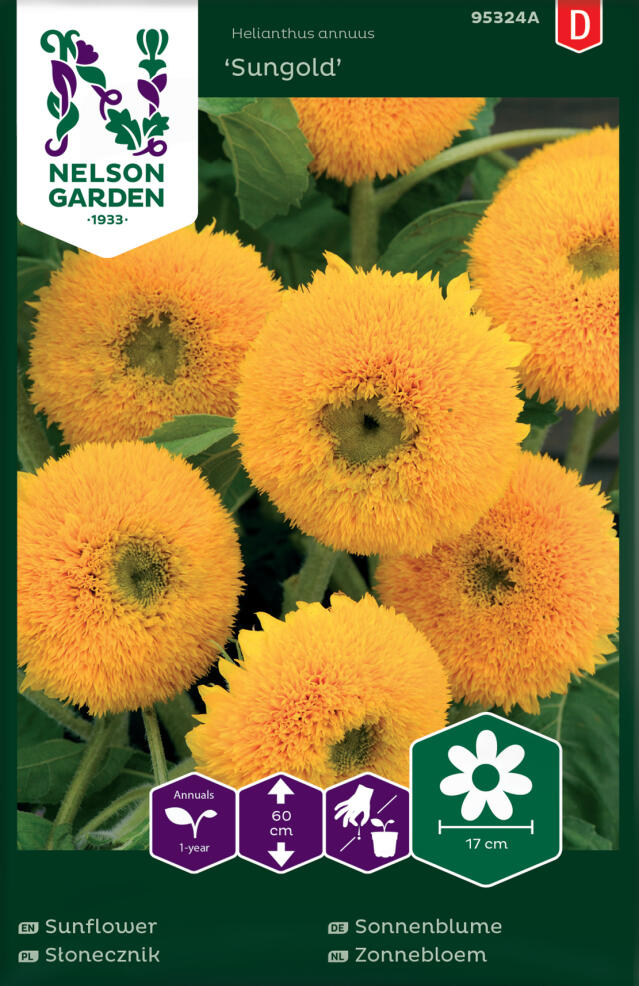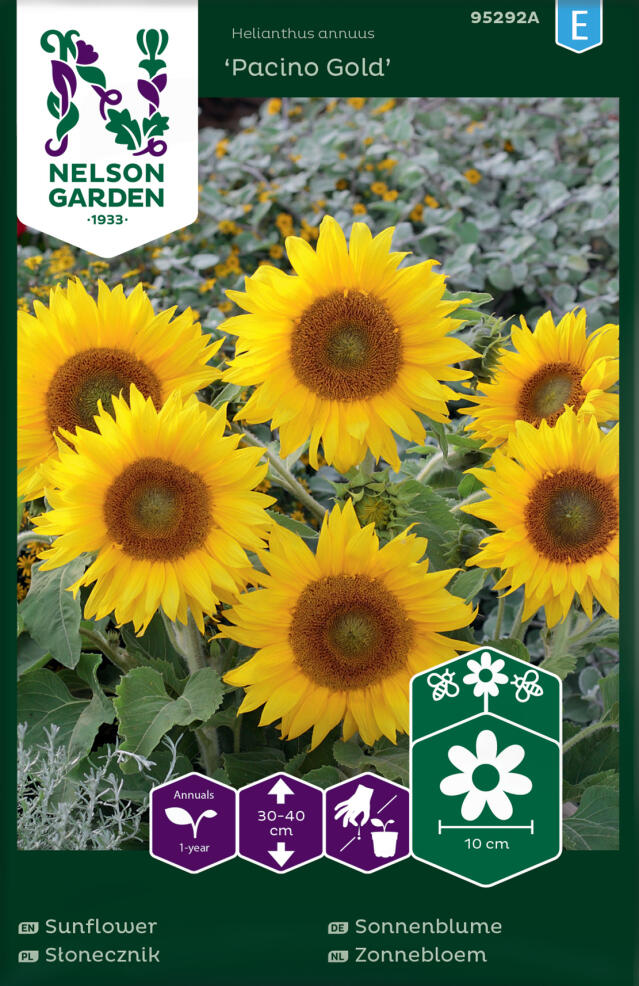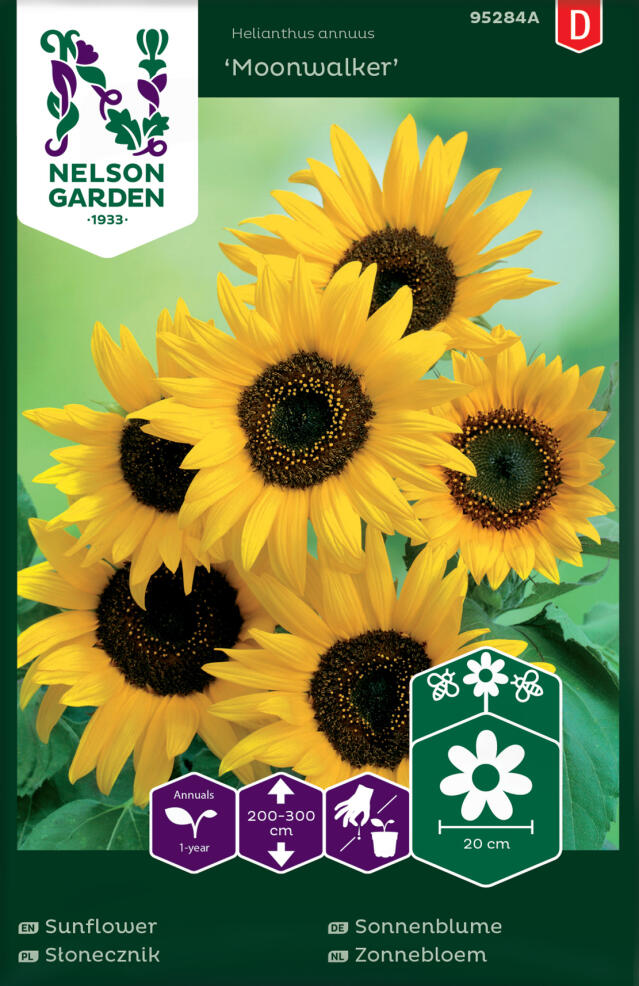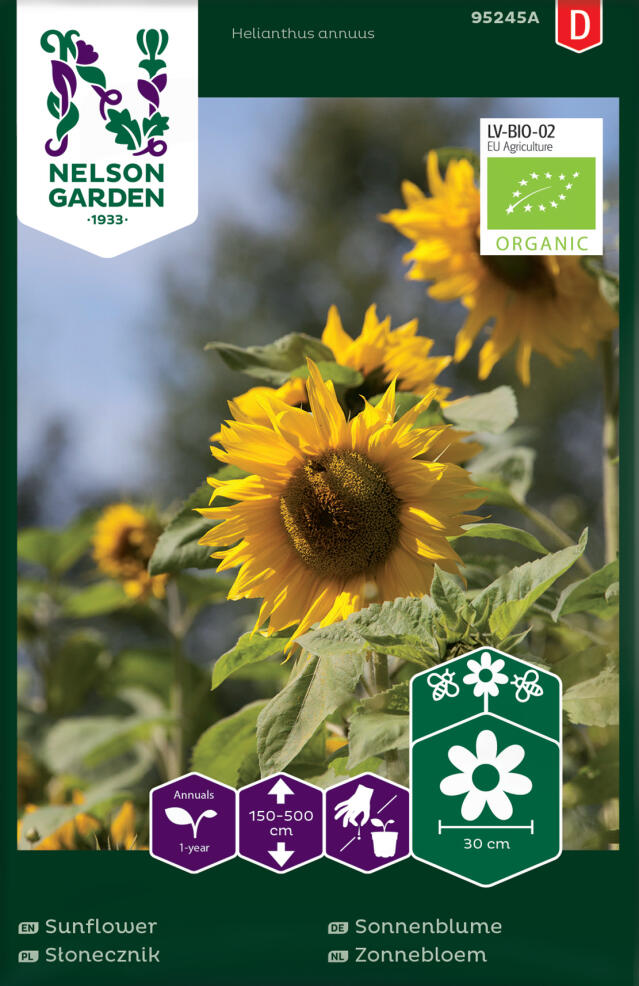Growing sunflowers
March 21, 2023Like the sun, they shine high above the plants – it’s not hard to see why the sunflower got its name. As well as the classic tall yellow sunflowers, there are lower varieties with smaller flowers in dark reds and pale yellows.
Sunflowers are one of the most easy-to-grow summer flowers. These stately, dazzling and hardy flowers come in a wealth of exciting varieties to fill your garden, and their seed heads make a tasty treat for small birds.
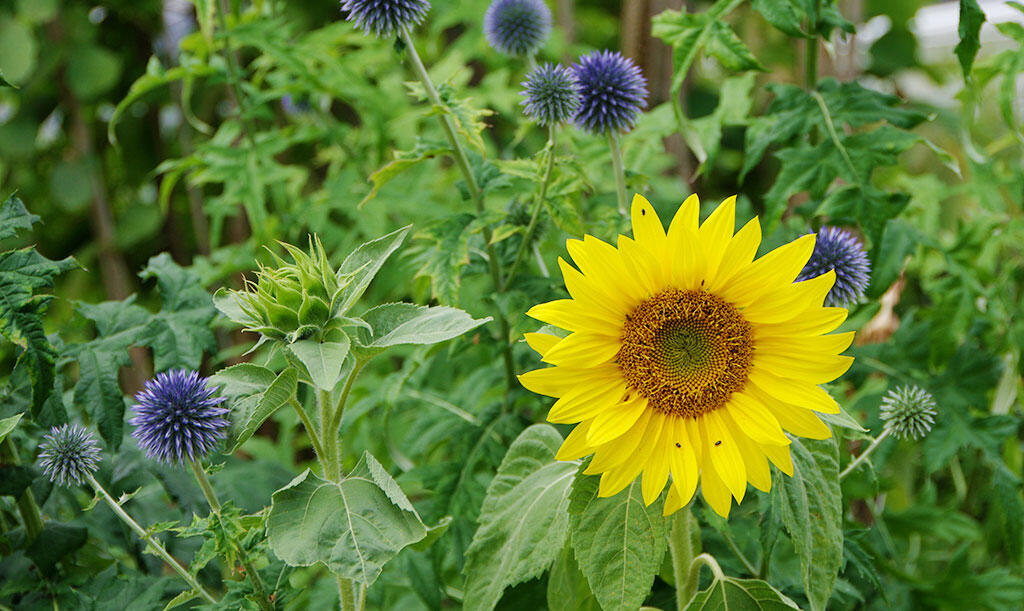 The classic yellow sunflower goes well with blue ball thistles. Photo: Lovisa Back
The classic yellow sunflower goes well with blue ball thistles. Photo: Lovisa Back
When and how to sow
Sunflowers can be sown outdoors in April, once the soil has warmed up. For earlier flowering, you can sow the seeds indoors in March. If you have a slug problem, it is best to grow them indoors because slugs love the little sunflower shoots.
Which soil type is best?
Sunflowers are undemanding, but for abundant flowering and sturdy plants you need to grow them in nutrient-rich, sandy soil. To grow really tall, sunflowers need deep soil for their roots.
Which location is best?
Sunflowers like a sunny spot with some protection from strong winds and, as the name suggests, sunflowers thrive best in the sun. Since many varieties grow quite tall, they are also suitable for planting towards the back of plots.
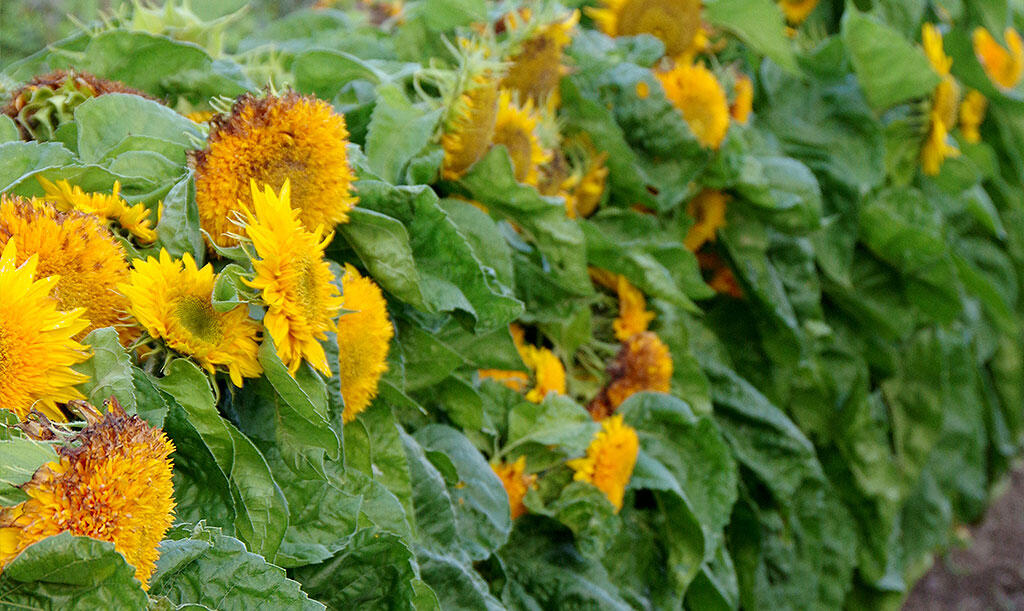 If you have the space, try growing sunflowers as a hedge so they can support each other. Photo: Lovisa Back
If you have the space, try growing sunflowers as a hedge so they can support each other. Photo: Lovisa Back
Can I grow sunflowers in pots?
Sunflowers can be grown in pots. It’s best to go for the slightly lower varieties for your pots, as the tallest varieties require a large volume and depth of soil.
How long do sunflowers bloom?
If you start seeds, the first flowers can appear as early as June, but they usually bloom from July until the arrival of the first frost.
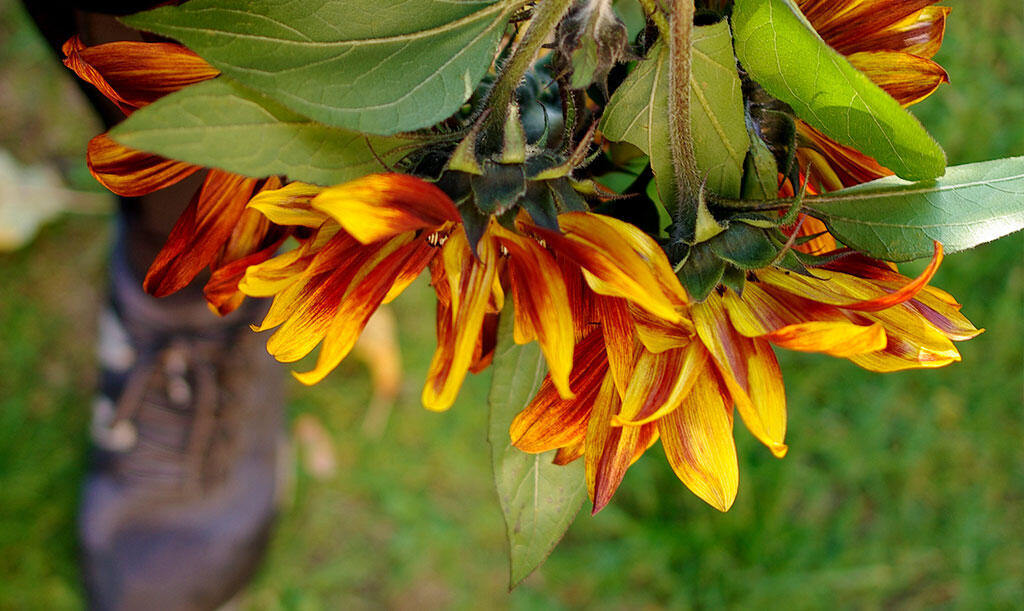
Which nutrients should I give?
Sunflowers are undemanding but they need plenty of nutrients and water to grow tall and strong.
Can I eat sunflowers?
In the world of summer primers, sunflower buds are a delicacy! Boil the flower buds for 5–10 minutes and eat with a drizzle of oil, a pinch of salt and a squeeze of lemon. You can also hull and roast the sunflower seeds in the autumn. It’s fiddly – but tasty!
Can I grow my own birdfeed?
Birds love sunflower seeds and they provide a much-needed supply of fat during the winter months. The simplest option is to simply leave the sunflower seed heads in the flowerbed. You can also dry the seeds and hang them out for the birds in winter.
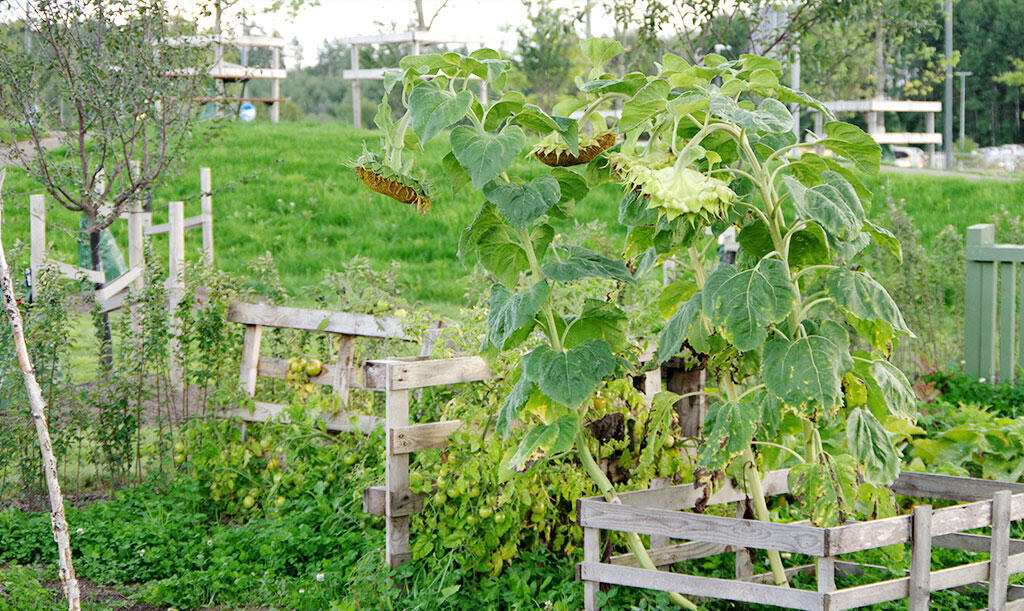 The tallest sunflowers with large heads may need support to keep them from falling over. You might want to leave them over the winter to feed the birds. Photo: Lovisa Back
The tallest sunflowers with large heads may need support to keep them from falling over. You might want to leave them over the winter to feed the birds. Photo: Lovisa Back
Which variety of sunflowers should I choose?
‘Sunspot’ is a classic, yellow sunflower that only grows to about 40–50 cm tall. If you want to attempt a record breaking height, try the ‘Moonwalker’ which can reach up to 3 metres or the ‘Uniflorus’ which can reach up to 5 metres.
Tips! Taller sunflowers may need support, such as a sturdy bamboo cane.
Double flowered sunflower varieties are particularly stunning. ‘Sungold’ grows to about 60 cm tall and ‘Double Sunking’ grows up to 2 metres.
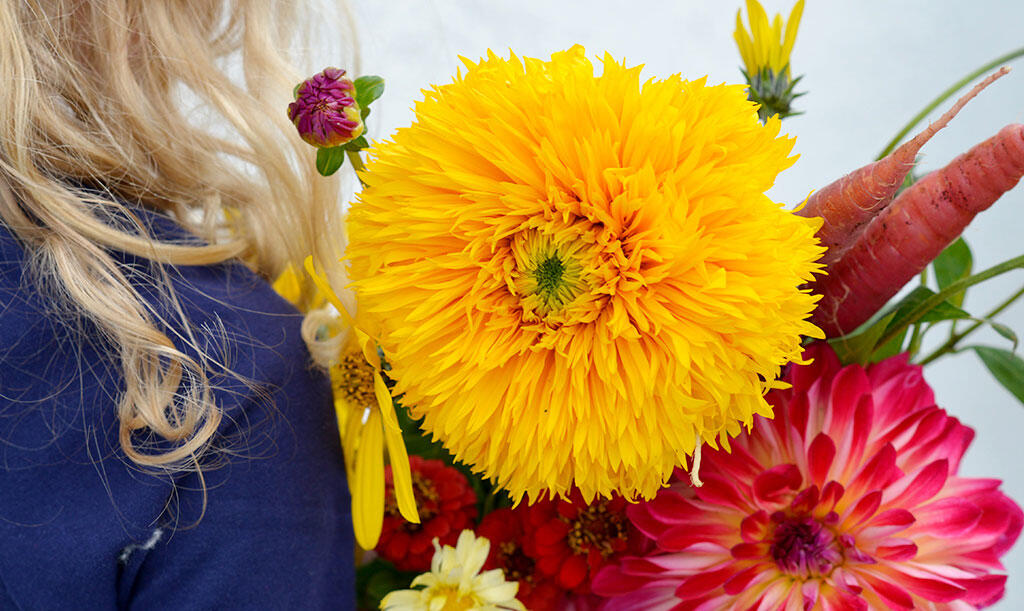 ‘Double Sunking’ grow up to two metres tall and bloom with fully double, golden-yellow flowers. Photo: Anna Lindeqvist
‘Double Sunking’ grow up to two metres tall and bloom with fully double, golden-yellow flowers. Photo: Anna Lindeqvist
‘Ruby’ F1 is a fiery dark red sunflower with slightly smaller flowers that grows up to 2 metres tall. The ‘Ice Cream’ variety is about the same height, but with even smaller flowers in vanilla hues.
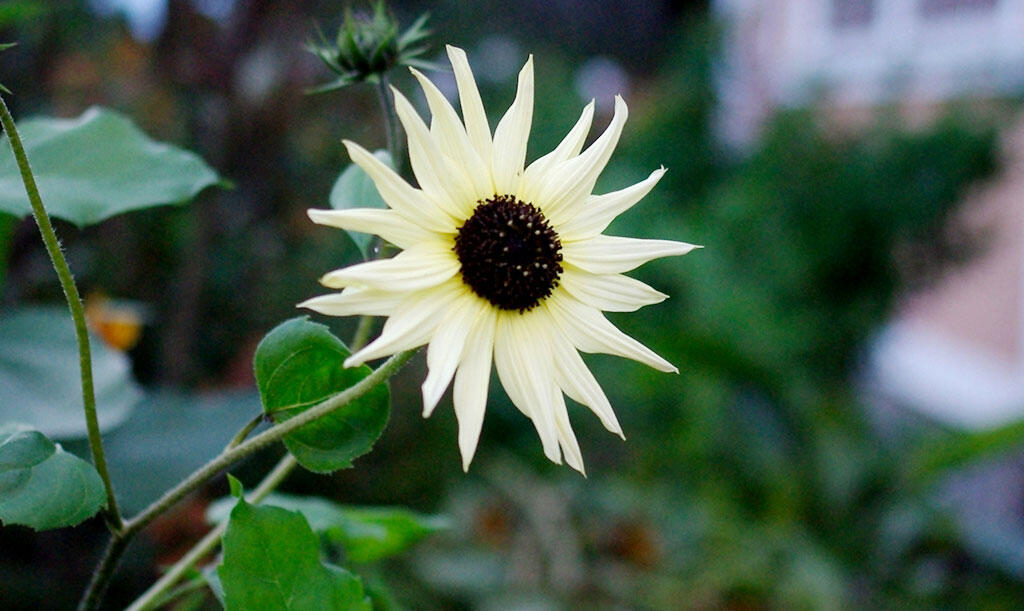 The ‘Ice Cream’ sunflower variety grows tall but branches out nicely and blooms with lots of bright vanilla-coloured flowers. Photo: Lovisa Back
The ‘Ice Cream’ sunflower variety grows tall but branches out nicely and blooms with lots of bright vanilla-coloured flowers. Photo: Lovisa Back
